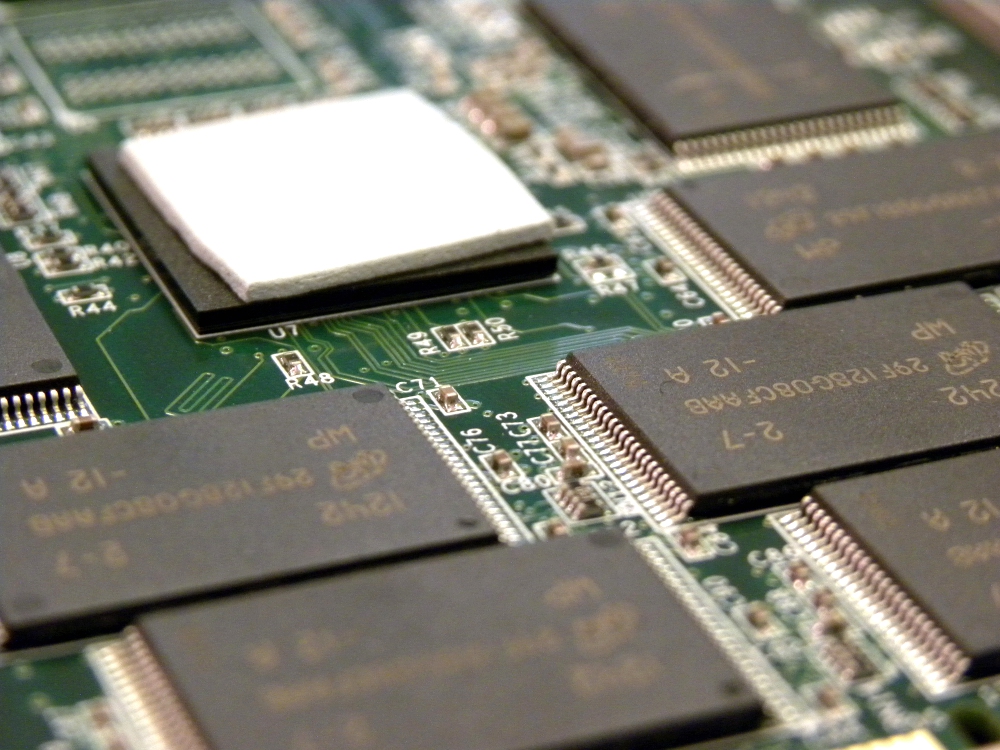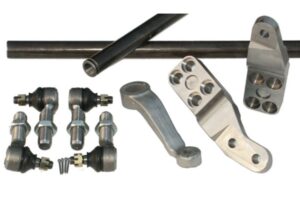
Introduction to SSDs and Their Importance
Solid State Drives (SSDs) have revolutionized the world of data storage with their speed, reliability, and efficiency. Unlike traditional Hard Disk Drives (HDDs), SSDs use flash memory to store data, leading to read-faster/write speeds and improved performance. As computers and devices evolve, understanding the nuances of SSD technology, particularly their lifespan, has become crucial for both consumers and professionals.
Why Understanding SSD Lifespan Matters
With the increasing reliance on digital storage, knowing how long your SSD will last can impact your data management strategies, budget planning, and overall computing experience. Misconceptions about SSD durability and longevity can lead to unnecessary fear or misinformed purchasing decisions. This article aims to demystify these myths and provide a clear, evidence-based perspective on SSD lifespan.
SSD Lifespan: An Overview
Defining SSD Lifespan
The lifespan of an SSD is generally defined by the total amount of data written to it over time, measured in terabytes written (TBW) or drive writes per day (DWPD). These metrics estimate how much data can be written to the SSD before it is likely to fail.
Comparing SSD and HDD Lifespans
While HDDs have moving parts that are susceptible to wear and tear, SSDs rely on flash memory cells that degrade with each write cycle. However, modern SSDs are designed with advanced technologies to enhance their durability, often outlasting HDDs in terms of operational life and reliability.
Myth 1: SSDs Wear Out Quickly
Origins of the Myth
The belief that SSDs wear out quickly stems from their early days when flash memory technology was less advanced. Early adopters experienced premature failures due to limited write cycles, which fueled this myth.
Technological Advances in SSD Durability
Today’s SSDs are equipped with sophisticated algorithms and wear-leveling techniques that distribute write and erase cycles evenly across the memory cells. This significantly extends the lifespan of SSDs, making them reliable for everyday use.
Manufacturers’ Warranties and Lifespan Guarantees
Manufacturers now offer warranties that reflect their confidence in SSD durability. These warranties often cover several years and a specific amount of TBW, reassuring consumers of the drive’s longevity.
Myth 2: SSDs Have Limited Write Cycles
Understanding Write Endurance
Write endurance refers to the number of write and erase cycles a flash memory cell can undergo before it becomes unreliable. Modern SSDs have greatly improved in this regard, with many capable of handling hundreds of terabytes of written data.
Wear Leveling Technologies
Wear leveling is a technique used to extend the lifespan of SSDs by ensuring that write and erase cycles are evenly distributed across all memory cells. This prevents any single cell from wearing out prematurely and enhances the overall durability of the drive.
Real-World Usage vs. Theoretical Limits
While theoretical write limits can seem restrictive, real-world usage patterns rarely approach these limits. Typical consumer usage involves far fewer write operations than the maximum specified by manufacturers, meaning most users will never encounter these limits during the lifespan of their SSD.
Myth 3: SSDs Are More Prone to Data Loss
Data Retention Mechanisms in SSDs
SSDs are designed with robust data retention mechanisms that ensure data integrity even after extended periods of inactivity. These mechanisms help preserve data accuracy and reduce the risk of data loss.
Error Correction Codes (ECC)
Error Correction Codes (ECC) are integral to modern SSDs, detecting and correcting data corruption before it becomes a problem. ECC significantly enhances data reliability and reduces the likelihood of data loss.
Comparing Data Loss in SSDs and HDDs
While SSDs and HDDs can both experience data loss, the causes differ. HDDs are susceptible to mechanical failures, whereas SSDs are more vulnerable to data corruption due to their electronic nature. However, advanced error correction and data protection technologies in SSDs mitigate these risks effectively.
Myth 4: SSDs Fail Without Warning
Signs of SSD Failure
Unlike the abrupt failures often associated with HDDs, SSDs typically show signs of wear and impending failure. These signs can include slow performance, frequent errors, and issues with booting or accessing files.
SMART Technology and Monitoring Tools
Self-monitoring, Analysis, and Reporting Technology (SMART) is a feature in most SSDs that monitors their health and performance. By regularly checking SMART attributes, users can anticipate potential failures and take preventive action.
Preventive Maintenance for SSDs
Regular maintenance, such as firmware updates and monitoring SSD health using software tools, can help extend the lifespan of an SSD and reduce the risk of unexpected failures.
Myth 5: SSDs Are Too Expensive for Everyday Use
Cost Trends Over Time
The cost of SSDs has decreased significantly over the past decade, making them more accessible to everyday consumers. Advances in manufacturing and increased competition have driven prices down, making SSDs a viable option for most users.
Cost-Per-Gigabyte Analysis
When evaluating the cost of SSDs, it is essential to consider the cost per gigabyte. While SSDs may still be more expensive than HDDs on a per-gigabyte basis, their performance benefits often justify the higher price.
Long-Term Cost Efficiency
SSDs can offer long-term cost efficiency through lower energy consumption, reduced cooling needs, and fewer maintenance costs. These factors, combined with their improved performance and reliability, make SSDs a cost-effective choice over time.
Myth 6: SSDs Are Only Beneficial for Gaming
SSDs in Everyday Computing
SSDs provide significant benefits in everyday computing tasks, including faster boot times, quicker application loading, and overall improved system responsiveness. These advantages make SSDs valuable for all users, not just gamers.
Impact on System Performance and Boot Times
Replacing an HDD with an SSD can dramatically enhance system performance and reduce boot times, transforming the user experience. This is particularly beneficial for older systems that can gain a new lease on life with an SSD upgrade.
Use Cases in Professional Environments
In professional environments, SSDs offer advantages such as faster data access, reduced downtime, and improved productivity. Fields like video editing, software development, and data analysis benefit greatly from the speed and reliability of SSDs.
Myth 7: SSDs Can’t Be Repaired
Repairability of SSDs
While SSDs are less repairable than HDDs due to their integrated circuits, some issues can still be addressed. Firmware updates and data recovery services can resolve many problems without needing a complete replacement.
Common SSD Issues and Fixes
Common issues such as firmware corruption or bad sectors can often be fixed through software tools or professional services. However, physical damage to the SSD’s components usually necessitates replacement.
When Replacement is Necessary
If an SSD experiences critical failures or extensive wear beyond repairable limits, replacement is the best option. Thankfully, the cost of SSDs has become more affordable, making replacement less burdensome.
Technological Innovations Enhancing SSD Lifespan
Advancements in NAND Technology
NAND technology has seen significant advancements, including the development of 3D NAND, which stacks memory cells vertically to increase density and durability. These innovations contribute to longer SSD lifespans and better performance.
Introduction of 3D NAND
3D NAND technology allows for greater storage capacity and improved endurance by stacking multiple layers of memory cells. This design reduces wear on individual cells and extends the overall lifespan of the SSD.
Impact of NVMe Protocols
The Non-Volatile Memory Express (NVMe) protocol offers faster data transfer speeds and lower latency compared to traditional SATA interfaces. NVMe SSDs deliver enhanced performance and efficiency, contributing to their longevity.
Real-World Lifespan of Modern SSDs
Case Studies and Reports
Numerous case studies and reports have demonstrated the long-term reliability of modern SSDs. For example, enterprise environments where SSDs undergo heavy usage still report impressive longevity and performance.
User Experiences and Testimonials
User testimonials and reviews frequently highlight the durability and reliability of SSDs. Many users report years of trouble-free operation, reinforcing the notion that SSDs can outlast their theoretical limits.
Statistics on Average SSD Lifespan
Industry statistics indicate that the average lifespan of an SSD is often well beyond the warranty period, with many drives continuing to function reliably for several years after their expected lifespan.
Expert Insights on SSD Lifespan
Interviews with Industry Professionals
Interviews with industry professionals provide valuable insights into the factors influencing SSD lifespan and the technologies that enhance their durability. Experts emphasize the importance of regular maintenance and smart usage practices.
Quotes from SSD Manufacturers
Manufacturers often provide detailed information about the expected lifespan of their SSDs, backed by rigorous testing and quality assurance processes. Their insights help debunk myths and set realistic expectations for consumers.
Research Findings from Tech Analysts
Tech analysts frequently publish research findings on SSD performance and longevity, offering evidence-based perspectives that help dispel common myths and misconceptions about SSD durability.
Preventive Measures to Extend SSD Lifespan
Optimal Storage Practices
Storing SSDs in environments with stable temperatures and humidity levels can help prevent damage and extend their lifespan. Avoiding exposure to extreme conditions is crucial for maintaining SSD health.
Software Solutions for SSD Maintenance
Various software tools are available to help maintain SSD health, including utilities for monitoring SMART attributes, optimizing performance, and performing secure data erasure. Regular use of these tools can prolong the life of an SSD.
Regular Backup and Data Management Strategies
Implementing regular backup routines and effective data management strategies can protect against data loss and reduce wear on the SSD. This includes using cloud storage and external drives for less frequently accessed data.
SSD Lifespan and Environmental Impact
E-Waste Considerations
The longer lifespan of SSDs compared to HDDs can contribute to reducing electronic waste. By choosing durable storage solutions, consumers can minimize their environmental footprint and support sustainability efforts.
Recycling and Disposal Practices
Proper recycling and disposal of SSDs are essential for minimizing environmental impact. Many manufacturers offer take-back programs and recycling options to ensure that end-of-life SSDs are disposed of responsibly.
Sustainability of SSD Production
The production of SSDs involves sourcing materials and manufacturing processes that can impact the environment. However, advances in technology and industry practices are working towards more sustainable production methods.
Future Prospects for SSD Technology
Predictions for SSD Evolution
The future of SSD technology looks promising, with ongoing research focused on increasing capacity, improving endurance, and reducing costs. Innovations such as new types of memory cells and improved interfaces will drive this evolution.
Emerging Technologies and Their Potential Impact
Emerging technologies, including next-generation memory solutions like 3D XPoint and advancements in quantum storage, have the potential to further revolutionize the SSD landscape, offering even greater performance and longevity.
The Future of Data Storage Solutions
As data storage needs continue to grow, SSDs will play an increasingly vital role in both consumer and enterprise environments. Their ability to offer fast, reliable, and durable storage solutions positions them at the forefront of future data storage technologies.
Conclusion
Summary of Debunked Myths
Through this comprehensive examination, we have debunked several common myths about SSD lifespan. Modern SSDs are durable, reliable, and capable of meeting the demands of various use cases without the fear of premature failure.
Encouraging Informed Decisions About SSDs
By understanding the realities of SSD technology and lifespan, consumers can make informed decisions that best suit their needs. Awareness of the benefits and limitations of SSDs will lead to better data storage choices.
Final Thoughts on the Future of SSDs
The advancements in SSD technology continue to drive their adoption across different sectors. As innovations progress, SSDs will become even more integral to our digital lives, offering unparalleled performance and reliability.



